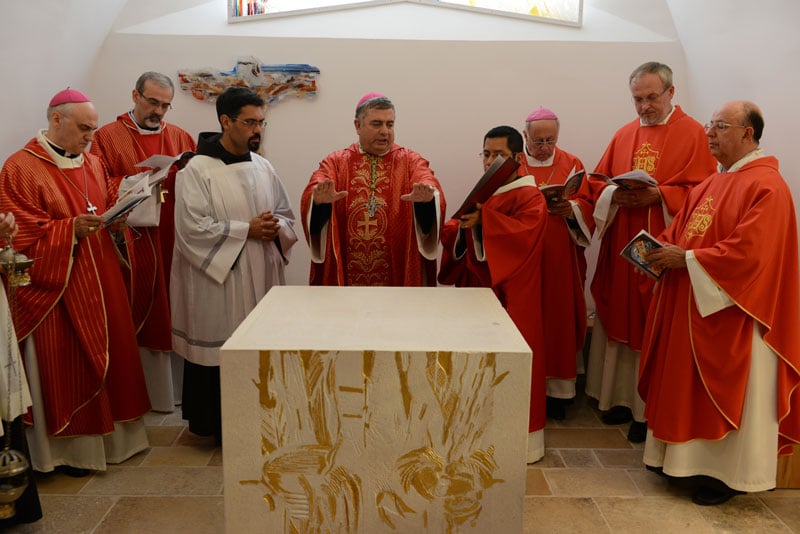
Inauguration of the new Monastery of St. Francis ad Coenaculum
The renovation project, which started in March 2012, has been carried out for more than two years by workers from the Custody’s Technical office as part of the project “Jerusalem, Stones of Memory” of Association pro Terra Sancta. The first stage of the renovation involved the restoration of the monastery and areas belonging to the upper chapel, which was reopened to pilgrims in February 2013. Work then focused on the lower chapel, dedicated to the Holy Spirit: this has been enlarged in order to accommodate a larger number of pilgrims, and embellished with stained-glass windows designed by the the artist Michele Canzoneri (from Palermo, in Italy) and by new liturgical furnishings by the same artist. In addition, access for the disabled to this chapel has been provided, while the monastery garden has been completely renovated based on a design by the architect Rossella Leone (wife of the artist Canzoneri) with the addition of a ramp connecting the chapel directly to the entrance.
On Sunday 12 October the entire complex was finally inaugurated, with a Eucharistic celebration presided by Mons. José Rodriguez Carballo ofm in the presence of Mons. Giuseppe Lazzarotto, the Apostolic Nuncio in Israel and Apostolic Delegate in Jerusalem and Palestine, the Custos of the Holy Land fra Pierbattista Pizzaballa ofm, the Vicar General emeritus Mons. Kamal Batish and numerous other concelebrants. All those present expressed their admiration for the results of the restoration works and there were numerous expressions of gratitude to the Technical Office and the laborers involved in the works.
The Monastery of St. Francis ad Coenaculum (familiarly known as the Little Cenacle) is located on Mount Zion, near the place where the Last Supper is commemorated and where, in the 14th century, the Friars Minor built the first monastery in the city of Jerusalem. Expelled from the site two centuries later by the Turks, the Franciscans have subsequently been unable to return there and in 1936 inaugurated a new monastery, a few dozen meters from the old one.